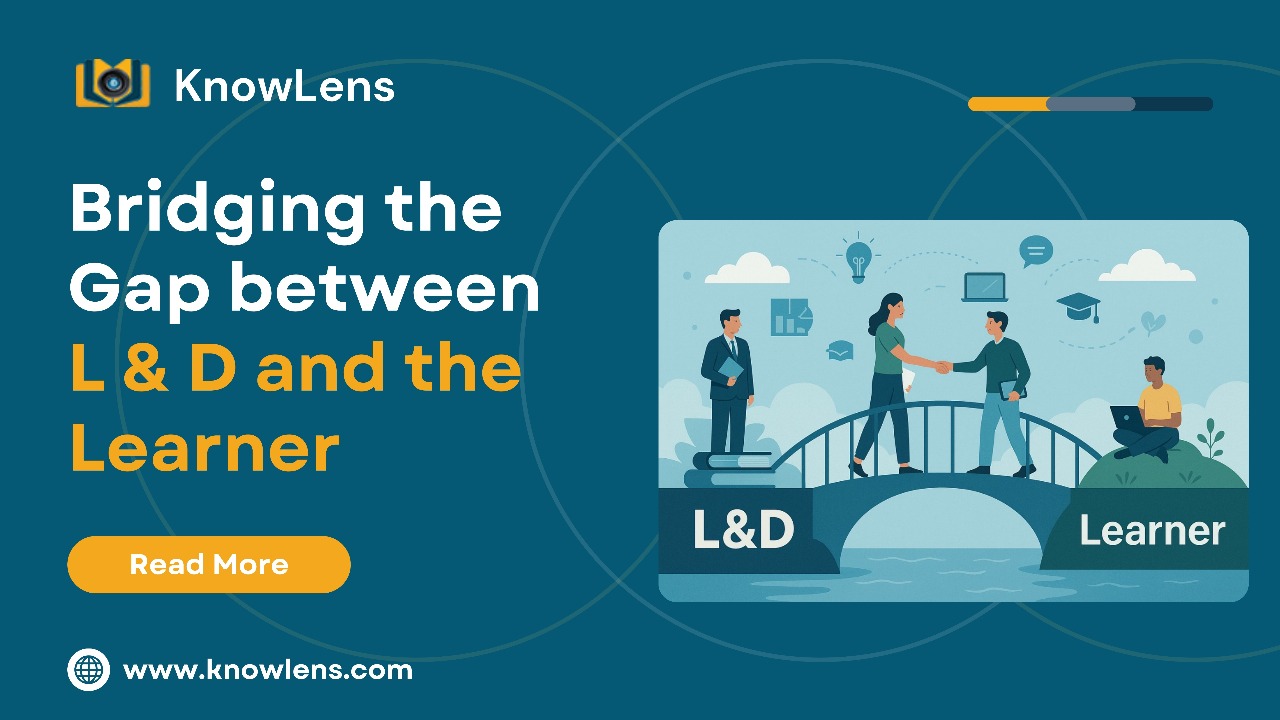As the modern workplace continues to evolve, increasingly we hear dissonant voices from the learner spectrum: “yet another course from L &D”, “Now I need to take time out from business”, “The material was so boring” and so on. One hears different versions of statistics – 20 % of learners are proactive learners but the remaining 80 % are not natural learners and need that push or prescription from L & D. Even Adaptive learning is being challenged by low e – learning completion rates. Further how does in depth learning happen with only a focus on microlearning as there are larger learning journeys to ensure true learner learning.
A lot of dissonant voices, but perhaps the approach towards resolving these are conceptually simple but perhaps difficult to implement. The root causes of these need to be understood well by L & D professionals to be truly successful in their journey. In this piece we analyses a few key elements which may help bridge this gap.
The Gaps
- Product Focus not Application Focus:
Most companies tend to focus on the product knowledge and ensure all employees are aware of their product or process. This is an easier approach which requires lower creativity, and a simple linear thinking of product knowledge rather than practical applied learning. E.g. Compliance training is often a list to dos and don’ts and when you list say 50 such dos and don’ts, from a learning perspective, do we really believe the learner will retain all 50 points. It is crucial to bring in the applied scenarios on the learning. It is crucial that topics like compliance training is deeply synched with scenarios or in a different area like product training for sales people, product and sales are deeply integrated in the instructional design with relevant examples.
- Business Driven not L & D Driven
In order to achieve application focus as in the previous section, there needs to be a deep immersion of the L & D person with the domain…the subject in hand. Increasingly we find sales training in many organizations embedded within the business. Even non sales training needs to be rooted in the business…and that requires spending time in the field, understanding the real issues. Rigorous training needs analysis complemented by time spent with the learner stakeholders. After all learning is all about cognitive psychology and the L & D person would be better equipped by spending more time with the actual learning stakeholders.
- Targeting contextualized learning for specific audiences
One size does not fit all. A big challenge for L & D professionals is achieving scale but personalization. Digital does offer a number of tools through AI driven adaptive learning for individual needs. Here it is crucial to differentiate between the universal and the personal. The universal lends itself to standardization and can be scaled and may require larger formats – maybe classroom, maybe extended digital journeys etc. e.g. a comprehensive journey through the product suite of the organization. The personal may be based on micro learning, adaptive tips etc. e.g. a specialized course on handling specific objections for people who are challenged with handling specific objections.
- Realism not principles
Companies need to break down principles into real situations. For instance if we need to educate learners on competency based behaviors, it is simply not enough to put a scorm or a ppt with the list of 5 behaviors for the different levels related to each competency. The values need to reflect realistic situations say with the cashier at the bank branch, the territory sales manager in FMCG, the call centre executive, the business analyst etc.
- Content Formats and Innovation
One refrain one keeps hearing is that e-learning content formats are often boring. While at Knowlens we develop both SCORMs and films, depending on the case, it is important to understand what each medium can achieve best. The traditional SCORMs do provide conceptual completion but when these are mixed with videos, and applied scenarios many of the concerns expressed in the earlier sections would be better addressed. For example, with one of our clients, we were briefed at the start of the project that the content unit should not be more than 3-4 minutes, as that’s the traditional wisdom of length of content in online due to low attentions spans. Our videos turned out to be 6 to 7 minutes long, and the same person was now saying I didn’t realize the time spent. It’s crucial that content is entertaining, has context built into instructional design and then there will be a natural improvement in learner response.
- Willingness to take risk and be curious
Most organizations often have traditional beliefs and ways of doing their L & D; most professionals have their own preferred approaches – preferred delivery modes, preferred vendors, approaches to learning investment etc….it is important to be curious and try new things …take risk. After all their clients – the business and end users are also used to the existing staple fare and practices. Chances are, without some degree of risk taking, the organization is going to be left behind the best in the industry. Who can bring about this risk taking other than the L & D professional?
Conclusion
In summary, we hope L & D professionals will think a little about some of the pointers in this piece and introspect. For us, being pioneers in the content space, these are things which we are obsessed with day in day out as we try to make each of content the best it can be.

